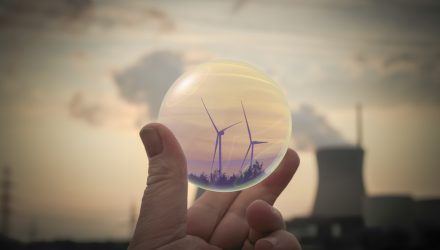High energy prices have reignited positive sentiment for both MLPs and clean energy ETFs, leaving investors torn on which type of product to add to their portfolios.
In the midst of a global energy transition from traditional carbon-based sources to renewable clean energy sources, investors, however, may be better off adding exposure to both sources of energy to diversify and maximize potential upside.
Transition carbon-based energy sources include crude oil and natural gas, and renewable clean energy sources include wind, solar, and fuel cells.
The IEA (International Energy Agency) now predicts that renewables will be the leading global power source by 2025. Importantly, the increasing share of renewable power will come at the cost of coal, rather than natural gas, whereby the IEA expects renewables to continue to increase to one-third of global electricity generation by 2025, according to ALPS.
Investors are attracted to U.S. midstream exposure for several reasons: the U.S. is the world’s largest producer of oil and natural gas with significant reserves; natural gas prices, along with natural gas liquids (NGLs), have significantly recovered this year amid improving demand; and natural gas demand is forecast to grow through 2030 with continued infrastructure build-out, according to ALPS.
Investors are adding clean energy to their portfolios to capitalize on the growing industry: global superpowers have unveiled aggressive carbon-neutral goals and clean energy policies with massive fiscal stimulus measures; clean energy technology costs continue to plummet as global adoption increases; and renewables continue to gain market share for power generation, according to ALPS.
“Natural gas has been known as the bridge fuel of the global energy transition, given its cleaner composition, availability, and competitive price thanks to increasing supplies of liquefied natural gas from the U.S. and elsewhere,” ALPS wrote. “Natural gas is also the primary feedstock in hydrogen, used to power clean fuel cells.”
According to ALPS, the energy transition portfolio is best viewed through an equal split between the Alerian MLP Infrastructure Index (AMZI) and the CIBC Atlas Clean Energy Index (NACEX). Investors can gain exposure to AMZI and NACEX with the Alerian MLP ETF (AMLP) and the ALPS Clean Energy ETF (ACES), respectively.
The blended strategy may offer improved risk-adjusted returns with a yield of 4.63%, according to ALPS, rather than choosing between a high yield in the midstream MLP sector and high growth in clean energy.
For more news, information, and strategy, visit the Energy Infrastructure Channel.








